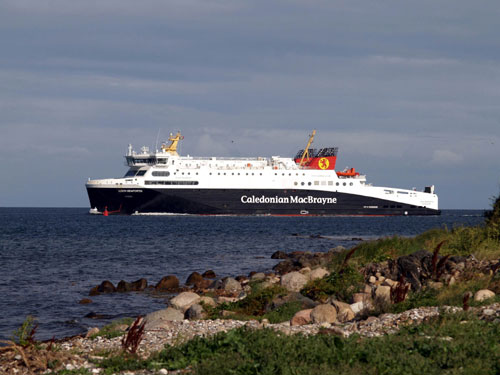FERRY passengers to some of Scotland’s most remote islands may soon be using contactless travel cards – just like Oyster cards used on the London underground.
New “smart ticketing” technology will soon allow passengers on CalMac ferries to use a microchipped travel card to pay for their crossings.
The same card could eventually be linked to public transport networks across the whole country – allowing travellers to cross all of Scotland with a single card.
The most successful “smart ticketing” system in use in the UK is the Oyster card system – used by London commuters travel services in the capital.
While in Hong Kong citizens use a similar system – the Octopus card – to pay for their public transport.
Commuters on Scots ferries could soon benefit from similar tech – allowing them to scan a prepaid card on boarding, rather than queuing for a ticket.

The new system could come into effect as early as May 2016 – when a new contract to run the CalMac ferries begins.
The contract to run the services is currently the subject of a fierce bidding war between public sector operator CalMac Ferries and private firm Serco.
But no matter who wins, the new contract stipulates that the owners must implement “smart and integrated ticketing and payment.”
The contract also says that the new measures must be in place by October 2021 – when “the majority of foot passenger journeys across all ticket types” will be made using smart media.
The contract’s requirements are in line with government plans to create a single national smart card that will be compatible with all modes of public transport across the country.
A similar system was implemented across Greater London as of July 2003.
The system allows customers to purchase a card from newsagents, topping it up with funds over the counter or at ticket machines.
Commuters then use the card to “tap in” and “tap out” at scanners on turnstiles, meaning they can travel without a physical ticket.
The ticket can be used on national rail services, trams, underground trains, buses, some riverboat services and even the Emirates air line cable car.
The use of the Oyster card system has led to controversial plans for ticket office closures on the London underground, which has pushed unions to threaten strikes over potential layoffs.
But a Rail and Marine Transport Union (RMT) official said they were satisfied that the new system for ferries would not threaten jobs.
Mick Cash, RMT general secretary, said: “We have got guarantees from CalMac and the Scottish government on no compulsory redundancies.”
CalMac services were suspended briefly late in June during a strike by RMT members over issues surrounding the potential privatisation of the service.

